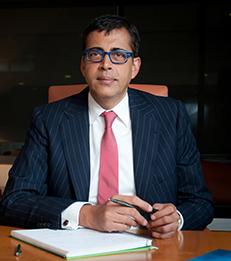Opinion
How globally connected is S'pore?
—


Part of Singapore's success on our depth metrics can be chalked up to the general pattern that countries with structural characteristics like Singapore's tend to be deeply globalised.
By Pankaj Ghemawat and Steven A. Altman
Correcting misperceptions about the depth of globalisation is important because greater depth is associated with faster economic growth.
A 2014 Time magazine article claimed that compared to Singapore, "no other place on earth has so engineered itself to prosper from globalisation - and succeeded at it". The DHL Global Connectedness Index, which we first released in 2011 and have since updated regularly, confirms the Lion City to be a leader on several aspects of globalisation, but also identifies gaps in Singapore's globality.
We measure globalisation on the DHL Global Connectedness Index based on hard data tracking countries' international trade, capital, information, and people flows. For a country to attain a high score, its international flows must both be large relative to the size of its domestic economy (what we call depth) and be distributed globally around the world rather than concentrated with a few partner countries (breadth).
Singapore's strong suit is depth, on which it ranks second, behind only Hong Kong. Placing Hong Kong aside due to its status as a Special Administrative Region of China, no independent country has larger international flows relative to the size of its domestic economy than Singapore. Not only does Singapore trade more intensively than any other country, it also receives the most phone call minutes per capita and has the highest ratio of inward foreign direct investment stock to GDP.
Part of Singapore's success on our depth metrics can
Read the full article as published in the Singapore Business Times.
___
Pankaj Ghemawat is a Global Professor of Management and Strategy and Director of the Center for the Globalization of Education and Management.
A 2014 Time magazine article claimed that compared to Singapore, "no other place on earth has so engineered itself to prosper from globalisation - and succeeded at it". The DHL Global Connectedness Index, which we first released in 2011 and have since updated regularly, confirms the Lion City to be a leader on several aspects of globalisation, but also identifies gaps in Singapore's globality.
We measure globalisation on the DHL Global Connectedness Index based on hard data tracking countries' international trade, capital, information, and people flows. For a country to attain a high score, its international flows must both be large relative to the size of its domestic economy (what we call depth) and be distributed globally around the world rather than concentrated with a few partner countries (breadth).
Singapore's strong suit is depth, on which it ranks second, behind only Hong Kong. Placing Hong Kong aside due to its status as a Special Administrative Region of China, no independent country has larger international flows relative to the size of its domestic economy than Singapore. Not only does Singapore trade more intensively than any other country, it also receives the most phone call minutes per capita and has the highest ratio of inward foreign direct investment stock to GDP.
Part of Singapore's success on our depth metrics can
Read the full article as published in the Singapore Business Times.
___
Pankaj Ghemawat is a Global Professor of Management and Strategy and Director of the Center for the Globalization of Education and Management.
